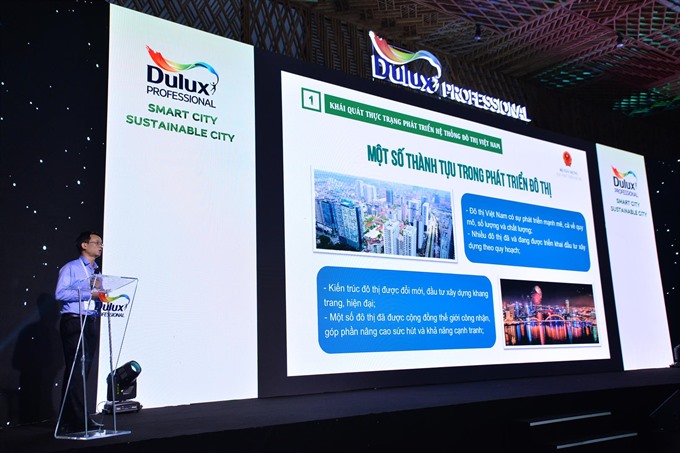 Society
Society

Việt Nam is promoting the development of smart cities and this requires participation by all ministries, localities and enterprises and international experience, a conference heard in HCM City on Thursday.
 |
| Việt Nam pushes for development of smart urban areas. -- VNS Photo |
HCM City — Việt Nam is promoting the development of smart cities and this requires participation by all ministries, localities and enterprises and international experience, a conference heard in HCM City on Thursday.
Speaking at the "Smart City - Sustainable City", Trần Quốc Thái, deputy general director of the Ministry of Construction’s urban development department, said: "The Ministry of Construction is proposing smart urban development by 2025 with a vision to 2030 and this is an important project.”
Larry Ng, the director of the Architecture and Urban Design Excellence at the Singaporean National Development Ministry’s Urban Redevelopment Authority, shared lessons from the island’s efforts to become a smart city.
“Since 1971 we have been making master plans and detailed plans for different areas of Singapore, and all are reconsidered every 10 years.
“We have invited United Nations experts to come and support us, and have recognised the importance of how to implement the master plan.”
Ng said in drafting the master plan the most important task was to collect opinions from the public and partners.
“The harmony between various areas was also important.”
Singapore has tried to create 2,600 residential areas with different designs but “to develop sustainably, we have to conserve all historic buildings and designs, and we still have 7,000 old historic sites,” he said.
Public transport like metro and bus networks and greenery are critical for a sustainable city, he said.
“We have limited private cars and encouraged public transportation to ensure good connectivity, reduce traffic jams and limit pollution.”
Singapore is trying to become a cycling nation next, he said.
In 1986, with a population of 2.6 million, Singapore had 36 per cent green cover, and 20 years later, after the population doubled, this increased to 47 per cent, he said.
“How can a small country like Singapore manage water and waste management and energy generation?”
Two-thirds of the island’s area is earmarked for storing rainwater in 48 canals and 17 reservoirs.
“All waste has to be treated, and we built an island using treated waste, called Semakau Landfill. It is good enough to live on.
“Long-term vision, transparency in using land and efficiently and economically implementing works are important for sustainable urban development.”
By 2050 it is forecast that 70 per cent of the world’s population will live in urban areas, putting tremendous pressure on infrastructure and facilities.
This is the premise for the creation and development of smart cities.
The seminar was organised by paint maker AkzoNobel and attracted 300 building owners, architects, builders, and policymakers. — VNS